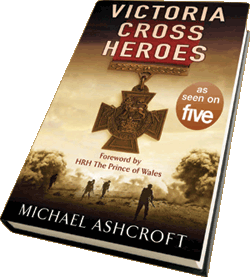
Victoria Cross Heroes - a book and a television series
Victoria Cross Heroes, written by Michael Ashcroft, was published November 2006 (paperback version released in May 2007). The book, which is 335 pages long and superbly illustrated, is published by Headline. Its publication coincides with a three-part television series of the same name to be shown by channel five from Sunday, 19 November.
The book has been written to mark the 150th anniversary of the VC, which was created by Royal Warrant from Queen Victoria. The beauty of the VC is its simplicity and the fact that it is awarded solely on merit and for outstanding bravery in the presence of the enemy.
The book tells the story of how Lord Ashcroft has built up the world's largest collection of VCs over the past 20 years. He has assembled a collection of more than 140 VCs, which are now owned by a trust, which was set up to care for and protect the medals.
The book also provides an insight into how the VC, Britain's most prestigious award for gallantry, was created in January 1856, towards the end of the Crimean War. It tells how, over the years, the rules governing how someone can win a VC have been altered in order to move with the times.
The bulk of the book, however, is taken up with the stories behind each of the VCs in the collection. Victoria Cross Heroes provides a short background to each recipient and gives an account of how he carried out an act of such extreme bravery that he was awarded the VC.
Because the book has been written in connection with the channel five series, it also tells the stories of some of the most remarkable VCs that have been awarded that are not in the collection assembled by Lord Ashcroft.
Over the past 150 years, three men have received not only the VC but also a 'bar', the equivalent of a second VC. Two of these men, Second Lieutenant (later Captain) Charles Upham and Captain Noel Chavasse, feature in the book. The stories behind more than 20 other VCs, which figure prominently in the television series but which are not owned by the trust, are also featured in the book.
The foreword to the book has been written by HRH The Prince of Wales. The heir to the throne remains as enthusiastic about the VC as his great great great grandmother was 150 years ago when she created the award, supported by her consort, Prince Albert, and her senior ministers. Indeed Prince Charles is so passionate about the merits of the VC that he is presenting the television series, which has been co-funded by Lord Ashcroft.
The book contains many remarkable stories of those who have earned the VC from the Army, Royal Navy and the Royal Air Force (RAF). The VCs in the collection include those awarded to:
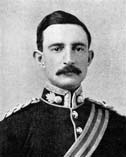
Captain (later Brigadier General) Charles FitzClarence
This brilliant and fearless Army officer won his VC for no less than three separate acts of bravery at the 215-day siege of Mafeking during the Boer War of 1899-1902. The siege captured the imagination of the British public and FitzClarence, who was hugely popular with his men, became a national hero. FitzClarence was considered so brave and dashing that he had been nicknamed 'The Demon of Mafeking' or simply 'The Demon', a sobriquet which stuck until his death. He also served with distinction in the First World War and on 12 November 1914, while serving in Belgium, was typically leading his men from the front during fighting against the Prussian Guard, the pride of the Kaiser's army. FitzClarence halted his men and advanced alone. The column then heard firing, advanced and found FitzClarence's body. At the age of 49, 'The Demon' had embarked on his final brush with the enemy.
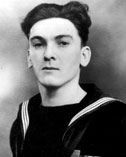
Acting Leading Seaman James Magennis
This rugged no-nonsense Ulsterman was a regular sailor, having joined the Royal Navy as a boy seaman on June 3 1935, aged 15. During the Second World War, he volunteered for 'special and hazardous duties' and found himself in July 1945 as the diver in a mini-submarine. The four-man crew was tasked with blowing up the Japanese cruiser, Takao, in the Johore Straits, Singapore. Magennis twice had to slip out of the mini submarine's 'wet and dry' compartment, on the first occasion to fix limpet mines to the cruiser and for a second time because something had gone disastrously wrong and he had to free the starboard Amatol charge from the midget submarine. In between his dives, the midget submarine had been pinned beneath Takao on a falling tide and it had looked as if the crew would perish - blown up by its own timed explosives. The mission was ultimately successful and, after the war, Magennis was awarded the VC for his daring exploits. He died in February 1986, aged 66.
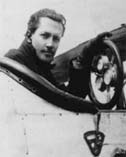
Second Lieutenant William Rhodes-Moorehouse
Second Lieutenant William Rhodes-Moorehouse, the first airman to win a VC, loved flying and was one of the early pilots before the First World War. In April 1915, the Royal Flying Corps was ordered to bomb the enemy's railway network to prevent reinforcements reaching the battle area. Rhodes-Moorehouse was chosen to bomb the railway junction at Courtrai in occupied France. He ignored advice and dropped to 300 feet to ensure a direct hit, but this meant his plane was almost certain to be hit. When he was over his target, a burst of machine-gun fire perforated the fuselage and smashed into his thigh but his mission was a success. Rather than land and be taken as a Prisoner of War, Rhodes-Moorehouse limped home but again encountered heavy fire from the ground. This led to two new wounds to his hand and abdomen. Rhodes-Moorehouse, aged 27, died from his wounds in hospital the next day with a letter from his wife on his pillow. It later emerged that the young officer, who was promoted posthumously to a full Lieutenant, had written a 'first and last letter' to his baby son before taking off on the perilous mission that won him the VC.
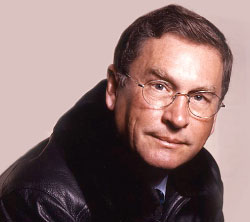
Michael Ashcroft - the man behind the book
Lord Ashcroft is an international businessman, philanthropist and author.
He has worked for nearly 40 years in the world of business as an innovative entrepreneur. During this time, he has bought, sold and merged numerous companies. Lord Ashcroft has a controlling interest in several publicly and privately-owned companies. He is chairman of BCB Holdings Ltd (formerly BB Holdings Ltd). In 1997, he negotiated the sale of ADT, the business services company, for more than $6.7 billion (£3.7 billion).
From December 2005 to September 2010 Lord Ashcroft was Deputy Chairman of the Conservative Party and from 2001 to 2010 he was a member of the party’s management Board. He is currently Treasurer of the International Democrat Union. Lord Ashcroft has supported the Conservative Party for all his adult life. He was a donor under Margaret Thatcher's leadership and was treasurer of the party, under William Hague's leadership, from 1998 to 2001.
Lord Ashcroft has a wide range of charity commitments. He has, however, always concentrated on areas that interest him most, particularly crime prevention and education. In 1998 he formed Crimestoppers (originally called Community Action Trust), which was aimed at combating crimes against the person. Since its inception, Crimestoppers has received more than 850,000 calls with useful information. This has resulted in more than 74,000 arrests, while more than £94 million of property has been recovered along with drugs worth more than £130 million.
Lord Ashcroft is a respected author. Victoria Cross Heroes is the second book that he has written in two years. His first book Dirty Politics, Dirty Times was published in hardback in 2005 and in paperback in September 2005. The book told the story of his battles against The Times newspaper and New Labour. His other publications include Smell the coffee: a wake-up call for the Conservative Party, a 114-page pamphlet which analysed the party's performance in the build-up to the 2005 general election. He has also written numerous newspaper and magazine articles on a variety of subjects.
* Victoria Cross Heroes by Michael Ashcroft, is published in hardback by Headline on 6 November 2006 and an updated paperback version is due for release on 3 May 2007.
* Those wanting to know more about Lord Ashcroft should visit his website: www.lordashcroft.com or buy his first book, Dirty Politics, Dirty Times.